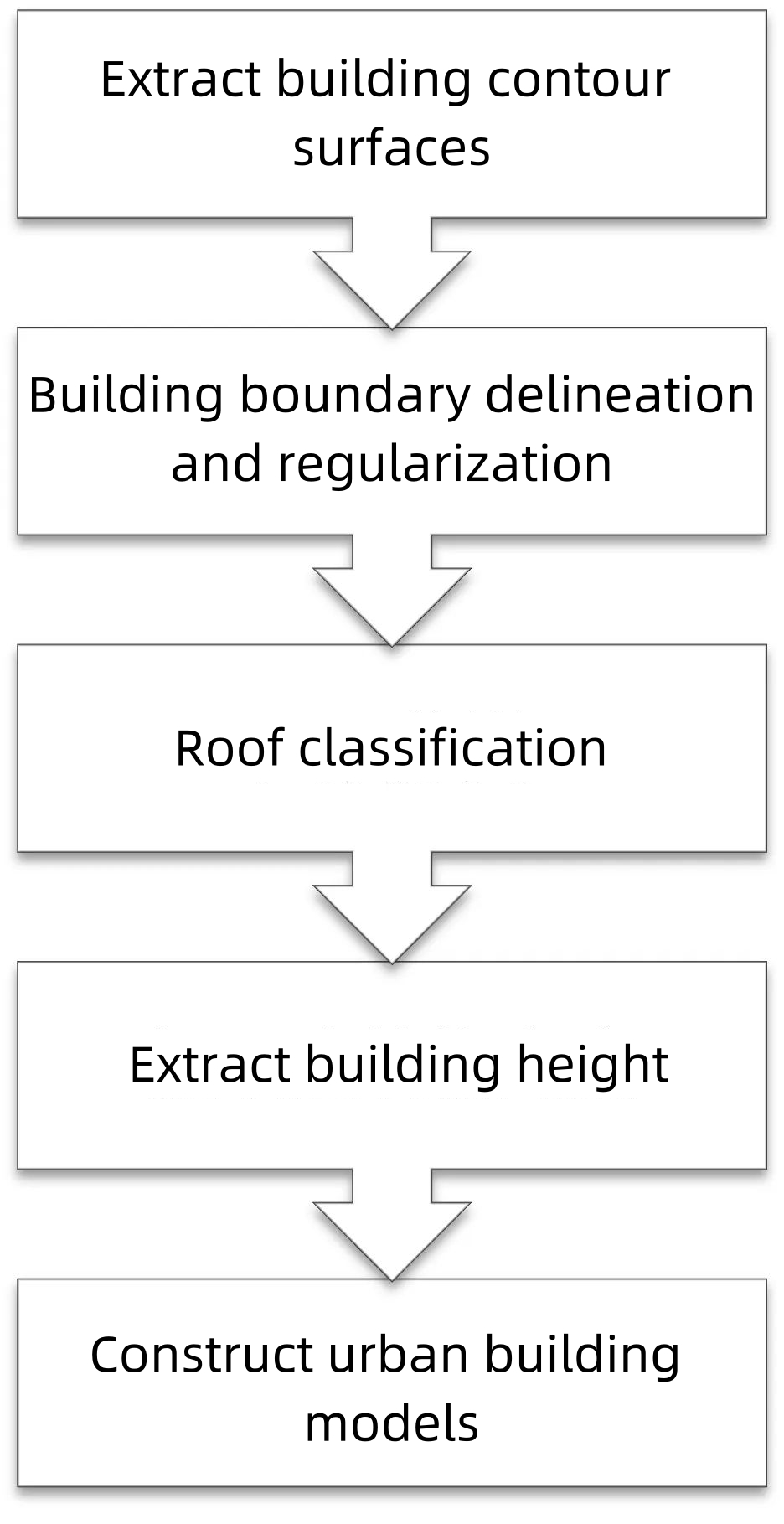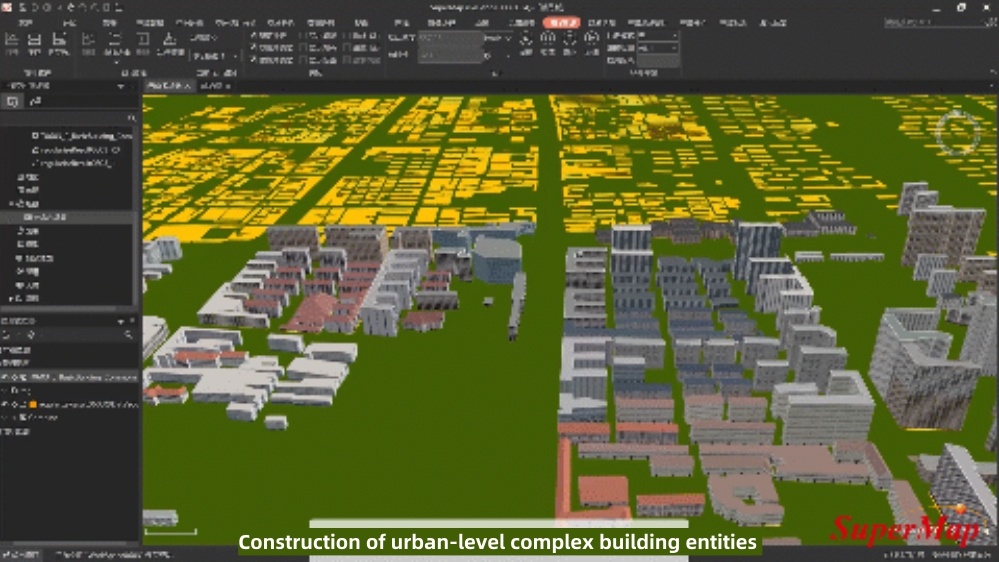Three-dimensional representation of spatio-temporal geographic information is a core technology driving the rapid development of fields such as CIM (City Information Modeling), 3D real scene, and digital twin cities. However, traditional manual modeling techniques—especially for city-scale projects—bear disadvantages such as high costs, long cycles, low automation, and inefficiency, failing to meet the demands of fast-paced modeling in digital transformation.
To address these challenges, SuperMap GIS integrates four key techniques—rule-based modeling, procedural modeling, symbolic modeling, and AI-driven modeling—to enable efficient construction of 3D models ranging from individual geometric objects to urban buildings, roads, and utility networks. This breakthrough solves the challenge of large-scale scene automated generation, providing digital transformation with a data foundation that can be used for visualization, computation and interaction.
01 Rule-Based Modeling: Generating Regular Geometric Objects
SuperMap GIS employs predefined algorithms and parametric rules to automate the cost-effective construction of regular geometric objects.
-Efficient Rule-Based Toolkits: Convert 2D/3D vectors into 3D models with one click. City-scale modeling can now be achieved on standard workstations, lowering the barrier to batch 3D modeling.
-Complex Surface Modeling: Use mathematical expressions to generate intricate 3D surfaces like Möbius strips, enabling rapid creation of special geometric forms.
- Parametric Modeling with Flexibility: Formula-driven shapes and real-time parameter adjustments (e.g., radius, height, curvature) allow quick generation of complex objects like bent cylinders or elliptical rings.
02 Procedural Modeling: Intelligent Construction of Urban Components
Powered by underlying algorithms and predefined rule engines, SuperMap's procedural modeling technology automates the creation of urban components (e.g., utility wells, roads, buildings) with minimal parameter input, boosting efficiency by over 10x.
- Utility Well Modeling: Automatically match parameters and pipeline topology to correlate model and attribute, generate city-scale well models in minutes, and support applications like pipe burst analysis.

Example of well modeling
- Road Engineering Design: Use the GPA toolkit (Data Modeling → Terrain Fusion → Service Publishing) to generate 3D models of roads, tunnels, bridges, and slopes on PCs or the cloud with one click. Adjust parameters dynamically for real-time design iterations with multi-terminal collaboration.

Example of road engineering design
- Urban Road Design: Generate 20,000 road models from centerlines within 1 minute, with automated intersections, sidewalks, and road markings, ensuring compliance while slashing design time.
- Urban Building Design: Produce 1 million LOD 1.3 building models in 6 hours, complete with 5 roof types and an 86-material library (including 12 PBR textures). Architectural details like waistlines are precisely rendered, offering a high-precision, low-cost 3D space foundation for digital twin cities.
03 Symbolic Modeling: Rapid Construction of City-Scale 3D Pipeline Networks
SuperMap's symbolic modeling technology automatically parses pipeline parameters from 3D network datasets. Leveraging adaptive pipe joint symbols, it can generate millions of 3D pipelines and nodes rapidly. Features include dynamic attribute binding and topology self-correction (e.g., intersection avoidance). This approach eliminates the inefficiencies, fragmentation, and update challenges of traditional pipeline modeling, providing a fully automated, analyzable, and upgradable 3D digital base for urban underground space governance.
04 AI-Driven Modeling: Replicating Individualized Urban Architecture
SuperMap's AI-driven modeling revolutionizes urban design by intelligently extracting building contours, recognizing roof types, and automating the entire workflow from image parsing to procedural modeling and material rendering. Build 5,300 LOD 2.0 detailed building models in 20 minutes, reducing labor and time costs by over 90% compared to manual methods.

AI-Driven Urban Design Workflow

Example of AI-Driven Architectural Design
Looking Ahead
SuperMap will continue refining its 3D modeling technologies, delivering tailored solutions to empower digital transformation across industries. Through technological innovation, we aim to accelerate the realization of smarter, more connected urban ecosystems.